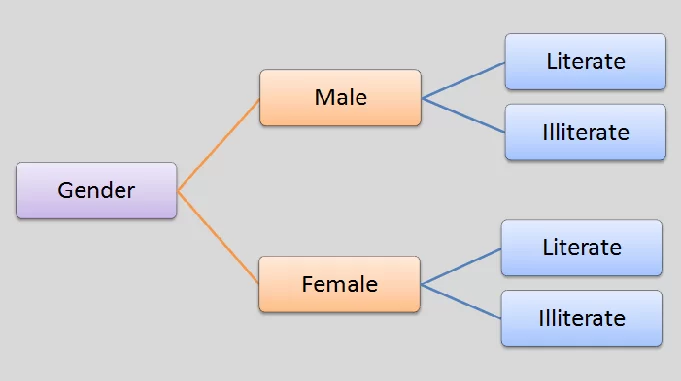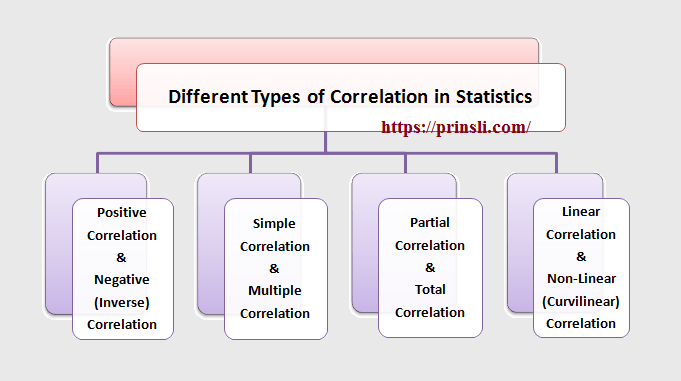
Guidelines for Data Classification:
Even if there are no hard and fast rules and regulations, some guidelines for data classification can be provided. The following are the guidelines for an ideal classification:
- There should be no overlap between the classes. The classes should be distinct and complete. Each observation or unit must be assigned to a distinct class.
For example, if people are classified according to their marital status, we commonly categorize them into two groups: married and unmarried. However, there are many people who do not fit into any of these categories, such as divorcees, widows, or widowers. They can be classified as “others” because the number of such people is so small in comparison to the number of married and unmarried people.
- Another essential characteristic is the clarity of the classes. It implies that classes should be arranged in such a way that a unit or observation can be placed in them without confusion.
- It is preferable to use standardised classes so that results can be compared from time to time. For example, we should use classifications such as illiterate, literate, primary, secondary, graduate, post-graduate, and technical to understand educational development. Furthermore, each class’s unit should be the same.
डेटा वर्गीकरण के लिए दिशानिर्देश:
डेटा वर्गीकरण के लिए भले ही कोई कठोर नियम और अधिनियम न हों, पर डेटा वर्गीकरण के लिए कुछ दिशानिर्देश दिए जा सकते हैं। एक आदर्श वर्गीकरण के लिए निम्नलिखित दिशानिर्देश हैं::
- कक्षाओं के बीच कोई ओवरलैप नहीं होना चाहिए। कक्षाएं अलग-अलग और पूर्ण होनी चाहिए। प्रत्येक प्रेक्षण या इकाई को एक अलग वर्ग में रखना चाहिए।
उदाहरण के लिए, यदि लोगों को उनकी वैवाहिक स्थिति के अनुसार वर्गीकृत किया जाता है, तो हम उन्हें सामान्यतः दो समूहों में वर्गीकृत करते हैं: विवाहित और अविवाहित। हालांकि, ऐसे कई लोग हैं जो इनमें से किसी भी श्रेणी में फिट नहीं होते हैं, जैसे कि तलाकशुदा, विधवा या विधुर। उन्हें “अन्य” के रूप में वर्गीकृत किया जा सकता है क्योंकि ऐसे लोगों की संख्या विवाहित और अविवाहित लोगों की संख्या की तुलना में बहुत कम है।.
- एक अन्य आवश्यक और महत्वपूर्ण विशेषता कक्षाओं (वर्गों) की स्पष्टता है। इसका मतलब यह है कि कक्षाओं को इस तरह से व्यवस्थित करना चाहिए कि उनमें एक इकाई या प्रेक्षण को बिना किसी भ्रम के रखा जा सके।.
- मानकीकृत कक्षाओं का उपयोग करना बेहतर है, ताकि समय-समय पर परिणामों की तुलना की जा सके। उदाहरण के लिए, हमें शैक्षिक विकास को समझने के लिए निरक्षर, साक्षर, प्राथमिक, माध्यमिक, स्नातक, स्नातकोत्तर और तकनीकी जैसे वर्गीकरणों का उपयोग करना चाहिए। इसके अलावा, प्रत्येक वर्ग की इकाई समान होनी चाहिए।
(Source – Various books of college library)
Copyrighted Material © 2019 - 2024 Prinsli.com - All rights reserved
All content on this website is copyrighted. It is prohibited to copy, publish or distribute the content and images of this website through any website, book, newspaper, software, videos, YouTube Channel or any other medium without written permission. You are not authorized to alter, obscure or remove any proprietary information, copyright or logo from this Website in any way. If any of these rules are violated, it will be strongly protested and legal action will be taken.




Be the first to comment